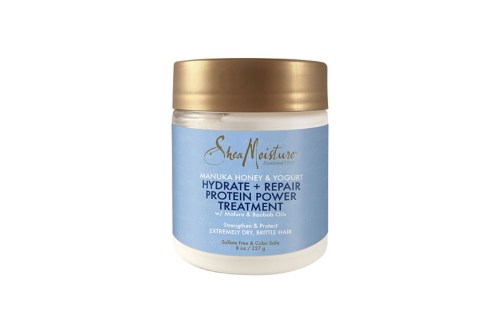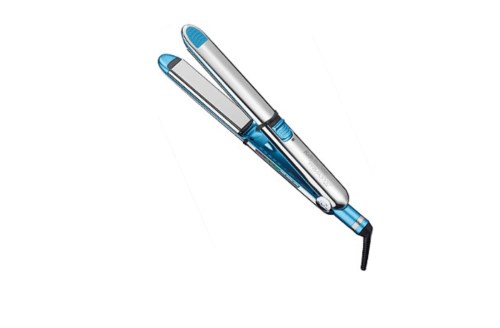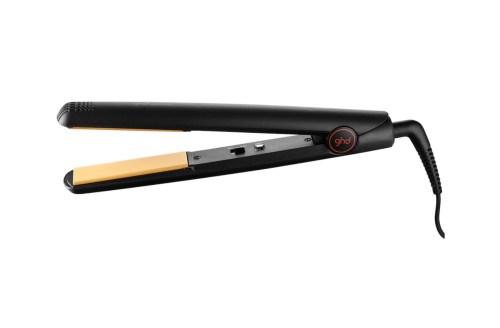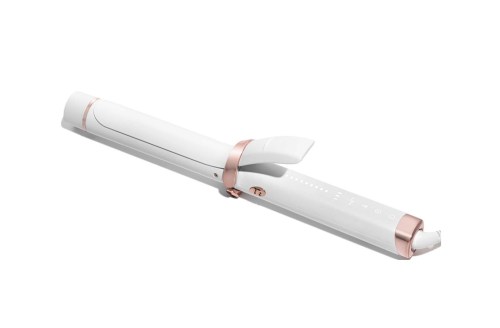Our editors independently select these products. Making a purchase through our links may earn Well+Good a commission
Are Hot Tools *Really* That Bad For Your Hair? Here’s What Hairstylists Have To Say
Do hot tools for hair, like straigthening and curling irons, cause damage to your strands? Here's what pros say about how to use them safely.

Hot tools are great for a lot of things—like transforming limp, lifeless strands into red carpet-worthy waves—but keeping your hair healthy traditionally hasn’t been one of them. Heat is one of the biggest offenders when it comes to damaging your hair, and if you aren’t careful, using too much of it, in any form, can leave your lengths dull, dry, and broken. But thanks to advances in technology in the hot tools category that claim to be better for your hair, we’ve been left asking: In 2020, are hot tools still really that bad for your hair?
Experts in This Article
celebrity hairstylist, founder of haircare brand FEKKAI
celebrity hairstylist at PRTNRS
celebrity hairstylist, founder of Marco Pelusi Hair Care
Before we dive in, it’s important to understand what “heat damage” actually means. When you put any sort of heat directly on your hair, it creates little holes in the protective layer, which can lead to breakage. “Any kind of heat on the hair can be challenging because we are constantly trying to maintain the hair’s natural moisture balance,” says Marco Pelusi, celebrity hairstylist. “Hair tends to mimic whatever environment it is in, so if you are heating your hair up with hot tools it will become hot and dry.”
And the more you use them, the worse the situation gets. “Repetitive use of hot tools can damage and break the hair severely—especially chemically treated hair—and can also eliminate the hair sheen on all types of hair,” says Frédéric Fekkai, celebrity hairstylist and founder of his eponymous hair-care line. Pros suggest applying the general rule of “everything in moderation” to your hot tools routine, meaning that you shouldn’t use any hot tool too frequently, on too high of a setting, or for too long.
Of course, not all hot tools are created equal—especially when it comes to the newer models on the market—and pros agree that some of them are decidedly more harmful to your hair than others. “The hotter the tool, the worse it becomes for hair,” says Fekkai, who admits that he doesn’t believe any hot tools are particularly “safe” for your hair. “The worst are iron barrels and plates because they are very hot and in direct contact with the hair,” he adds.
Aside from choosing the right material, you’ll also want to pay close attention to the heat setting you’re using. “As a professional stylist, I work with so many different types of hair every day, and can tell you firsthand that they can’t all be treated the same,” says celebrity hairstylist Laura Polko, adding that factors like hair thickness, length, and color treatment all come into play. So how can you ensure your hair stays protected while still styling it? It all comes down to choosing the right type of iron for your hair type.
Best for thick hair: BaBylissPRO Nano Titanium Prima 3000 Styling Iron, $190
If you’ve got thick hair, opt for something made from titanium, like the BaBylissPRO Nano Titanium Prima 3000 Styling Iron ($190). Titanium is a lightweight metal heats up quickly and evenly, and doesn’t require multiple passes over the same section of hair to get its job done (meaning that your hair isn’t spending any extra time in direct contact with the heat). Thanks to its unique, rounded shape, it can help you achieve curled and straightened styles, giving you two tools for the price of one
Best for fine or chemically-treated hair: GHD Ceramic 1-inch Styler, $149
For fine or chemically treated strands, choose a ceramic iron, like the GHD Ceramic 1-inch Styler ($149), which doesn’t get quite as hot as other metals on the market and move through your hair more easily. Like the Babyliss Iron, this one also acts as a curler and a straightener.
Best for no-fail styling: T3 Curl ID Curling Iron, $235
While you should generally stick to the lowest possible setting that works to style your strands, figuring out what that temperature actually is can be confusing. Next-gen irons with built-in heat sensors, like the T3 Curl ID Curling Iron ($235), can make this process easier by allowing you to input the specifics of your hair’s length, thickness, and color treatment in order to output the correct temperature setting. This, says Polko, results in less damage and better styling results.
Best for safer straightening: Flower Hair Tools Ceramic Straightening Hot Brush, $40
Avoid clamping your hair between hot plates with this heated brush, which straightens your hair as you comb with it. It’s designed with strand-safe ceramic and cool ionic brush tips to protect your hair, plus five different heat settings to work on any hair type.
Best conditioning treatment: SheaMoisture Manuka Honey & Yogurt Hydrate + Repair Protein-Strong Treatment, $11

No matter what type of hot tool you’re using, you’ll always want to properly prep your strands ahead of time. “Your hair is like a sponge and will absorb the first thing that is introduced to it, so if you’re styling with heat and there’s no barrier on the hair, it will simply suck up all the heat,” says Pelusi. This process starts in the shower, with a product like SheaMoisture Manuka Honey & Yogurt Hydrate + Repair Protein-Strong Treatment ($11), which combines manuka honey and yogurt to infuse your hair with moisture and breakage-preventing proteins.
Best heat protectant: L’Oréal Paris Advanced Hairstyles Blow Dry It Quick Spray, $7
Continue your hair-protection process post-shower with some sort of styling spray, like the L’Oréal Paris Advanced Hairstyles Blow Dry It Quick Spray ($7). This one, in particular, can be spritzed on before blowdrying, curling or straightening, and creates a barrier between your hair and whatever heat you’re planning to put on it. The result? Healthier hair with a whole lot less damage.
Once you’ve got your styling routine down, you’re ready to move on to the at-home haircut. Press play on the video below for a pro-grade coaching session on how to get through it.
Want even more beauty intel from our editors? Join Well+Good’s Fine Print Facebook group (and follow us on Instagram) for must-know tips and tricks.
Sign up for the Well+Good SHOP Newsletter
Get exclusive deals on wellness, beauty, fitness, and food products that have been hand-picked by our editors.
Got it, you've been added to our email list.















